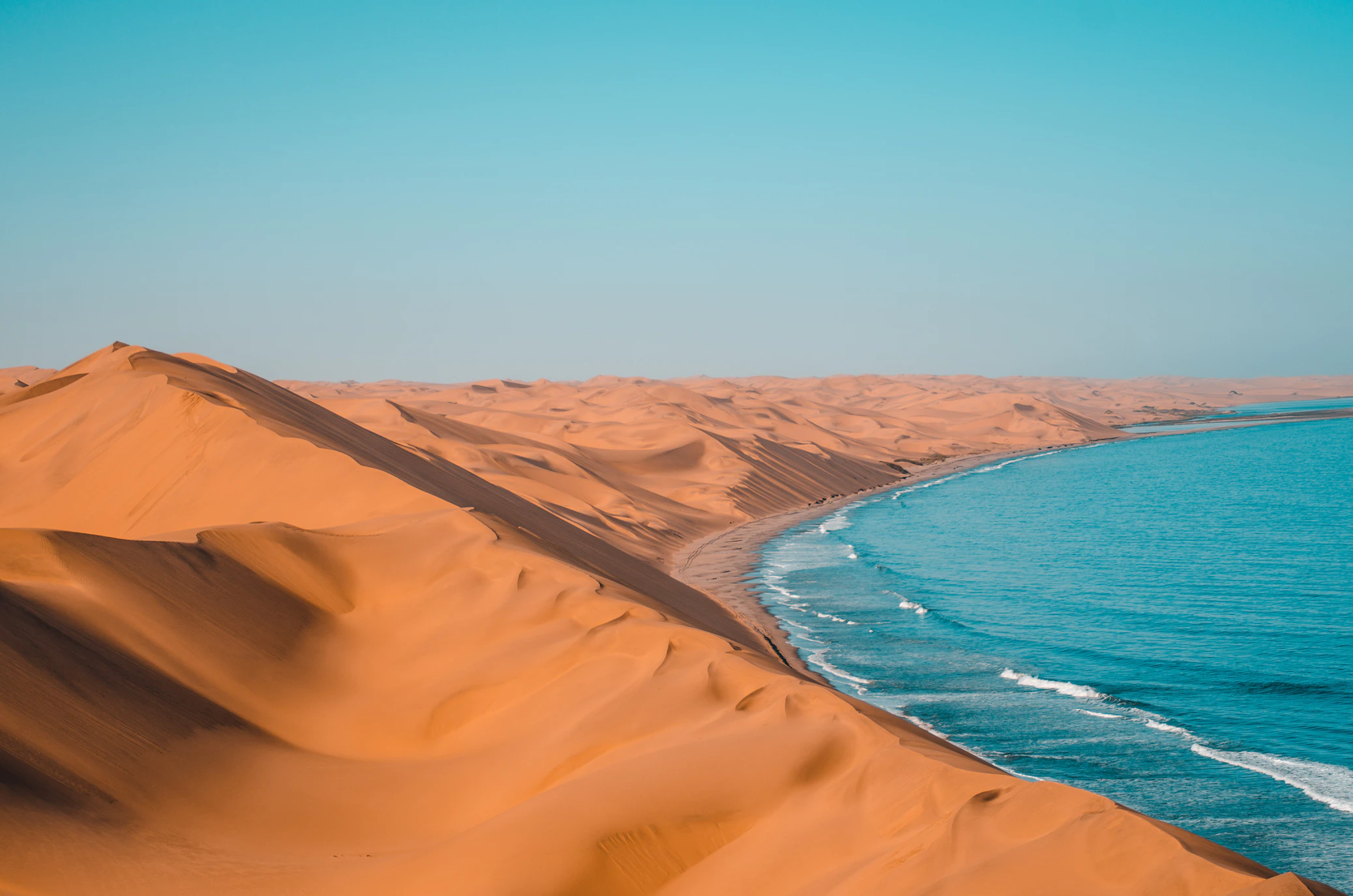Guide to Dunes of Texel: the Netherlands’ Ecological Paradise
Located on the largest of the Dutch Wadden Islands, Dunes of Texel National Park is one of the most immersive experiences in the Netherlands. The park is a rich mosaic of dunes, forests, heathlands, tidal marshes, and beaches that tell the story of centuries of wind, sea, and sand sculpting the environment.
Despite its relatively small size, the park plays an outsized role in the ecological and cultural heritage of the region. Because Texel lies along major migratory routes, birdwatchers flock here in spring and autumn to observe species that stop over, nest, or winter in the park.
The ever-shifting dunes, some towering up to 20 meters high, are the park’s signature feature. These dunes are not static formations but living entities, constantly changing due to wind and sea. Interspersed among them are dense pine forests planted to stabilize the soil in the early 20th century. Here’s our comprehensive guide to Dunes of Texel National Park;
Please Download Our Mobile App here.
Overview of Dunes of Texel National Park
Dunes of Texel National Park, situated on the northern Dutch island of Texel, spans 17 square miles and showcases a striking range of coastal ecosystems. Dominating the park is an expansive dune system that stretches across the western shoreline, while the north and south edges of the island transition into flat coastal plains.
The park itself is divided into 16 distinct areas, each presenting a unique combination of dune formations and wetland environments. Among these is De Geul, a lush dune valley known for hosting the largest colony of common spoonbills in the region. Nearby, De Muy features a dune lake and holds historical importance as the first known breeding ground for spoonbills on Texel.
Another standout area, De Slufter, is defined by its saltmarsh vegetation and serves as an essential nesting site for several bird species. At its heart lies a freshwater valley that supports diverse plant life, including rare orchids. Together, these varied habitats create a rich island ecosystem where the type of dune often determines which bird species thrive.
Wildlife in Dunes of Texel National Park

Wildlife thrives across the varied habitats of Dunes of Texel National Park, offering a rich and ever-changing spectacle for nature lovers. The dunes, forests, wetlands, and surrounding waters support a wide array of animals, including mammals, birds, and reptiles. On land, visitors may spot rabbits and hares darting through the vegetation, hedgehogs foraging near the underbrush, and small rodents like mice and voles rustling through the grasses.
Stoats and bats add to the mix, occasionally glimpsed during twilight hours. Along the coastline, both common and grey seals can be seen lounging on the beaches or playfully bobbing in the surf. Also, porpoises are sometimes spotted just offshore, gliding through the waters in search of food.
However, it’s the birdlife that truly sets this national park apart. Hundreds of bird species, both resident and migratory, pass through or nest here, making it one of the Netherlands’ premier destinations for birdwatching. From large flocks of greylag and brent geese to eider ducks and pheasants, the diversity is striking.
Sharp-eyed visitors may even catch a glimpse of short-eared owls hunting across the dunes or starlings and wagtails flitting through the skies. Gulls of many kinds complete the avian chorus. Adding to this dynamic ecosystem are several species of amphibians and reptiles, including the common frog, moor frog, natterjack toad, and the smooth newt.
Best Time to Visit Dunes of Texel National Park
The best time to visit Dunes of Texel National Park largely depends on what kind of experience you’re after. For those looking to take full advantage of the beach, long days, and warm weather, summer—specifically June through August—is the most popular season. This is when the island is at its liveliest, perfect for swimming, sunbathing, and water sports, with extended daylight hours allowing for full days of exploration.
However, summer also brings more visitors, so be prepared for busier trails and higher hotel prices. If you prefer a quieter, more contemplative atmosphere, spring and autumn are excellent alternatives. From March to May, the landscape bursts into color with blooming wildflowers, making it a scenic time for hiking and cycling.
Autumn (September through November) offers crisp air, brilliant foliage, and prime birdwatching as migratory species pass through the park. Both seasons are cooler, so packing layers is essential, but the tranquility and access to nature often make up for the chill. Winter is the least visited season, yet it has its own stark beauty.
The dunes take on a windswept, dramatic character, and though daylight hours are shorter and some paths may be closed due to rough weather. It’s also worth noting that some areas of the park may be restricted during the bird breeding season (March 1st to September 1st) to protect nesting habitats.
Getting to Dunes of Texel National Park

Reaching Dunes of Texel National Park from Amsterdam is an adventure in itself. It begins with a direct train ride from Amsterdam Centraal to Den Helder. The trip that takes roughly one hour and fifteen minutes. Upon arrival in Den Helder, travelers can hop on bus 33, which runs between the train station and the nearby ferry terminal.
From there, the ferry to Texel—operated by TESO—offers a scenic 20-minute crossing, with departures every 30 minutes throughout most of the day. Once on Texel, visitors have options to suit different travel styles. Public buses connect the ferry terminal with key destinations across the island, including areas near the national park.
For those who prefer a more active and immersive approach, renting a bicycle is a popular choice. Texel is known for its excellent network of cycle paths, many of which wind directly through the park’s landscapes. For added convenience, travelers can also bring a car aboard the ferry, offering even more flexibility for exploring Texel and its nature-rich western coast.
Other Activities in Dunes of Texel National Park
Beyond its stunning natural beauty, Dunes of Texel National Park offers a variety of activities. The park’s greatest appeal lies in the sweeping views of windswept beaches, rolling dunes, and the ever-changing ocean. Birdwatching is especially popular, as the area serves as a critical breeding ground for numerous bird species, attracting nature enthusiasts and photographers throughout the year.
One of the park’s standout landmarks is Lighthouse Texel, a striking red tower with a white dome that rises above the northern tip of the island. For those eager to explore on foot or by bike, the park features a network of well-maintained trails marked by blue, green, red, or yellow. It’s important to note that some trails may be closed during bird breeding seasons to protect wildlife.
Park Fees in Dunes of Texel National Park

Dunes of Texel National Park charge no admission fees. However, those looking to gain deeper insight into the park’s ecology and history, ranger-led walks through the dunes are available for €7.50.
FAQs
Is Dunes of Texel National Park worth visiting?
Yes, visiting Dunes of Texel National Park is absolutely worthwhile for anyone seeking a rich natural experience in the Netherlands. The park showcases a remarkably varied landscape, where sweeping sand dunes blend seamlessly with expansive beaches, quiet woodlands, colorful heathlands, and tidal salt marshes. Outdoor enthusiasts will find an extensive network of well-marked trails ideal for hiking and cycling.
How much time to spend in Dunes of Texel National Park?
A single day is enough to enjoy the main highlights of Dunes of Texel National Park. However, spending a weekend or a few days gives you time to experience the full range of the park’s diverse ecosystems. A three-day stay is ideal for visitors who want to take things at a relaxed pace, explore multiple hiking and cycling routes.
Conclusion
Dunes of Texel National Park is more than a coastal retreat—it’s a living landscape where nature, culture, and history converge. For travelers seeking a quieter, more contemplative experience of the Netherlands beyond its cities and canals, this island park offers a compelling and refreshing escape.




